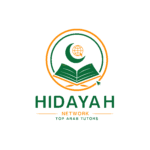How To Teach Noorani Qaida In English

- Hidayah
- Network
- | Role: Hidayah Network

To teach Noorani Qaida in English effectively, start by introducing the Arabic alphabet using English as a reference. Focus on proper Arabic pronunciation, compare English and Arabic sounds, and explore fundamental Tajweed rules, practice syllables.
Understanding Arabic vowel marks in the context of English also helps to learn Noorani Qaida for Beginners. Encourage learners to combine Arabic letters with English to form words. Read our comprehensive guide that ensures non-Arabic speakers learn Noorani Qaida lessons in English quickly.
Table of Contents
ToggleStep-by-Step Guide to Teaching Noorani Qaida in English
Here is a step-by-step guide on how to teach Noorani Qaida in English:
1. Start Teaching the Arabic Alphabet with English Reference
To start teaching Noorani Qaida, you must begin with the most essential thing: the Arabic alphabet. People who don’t know Arabic might find the alphabet hard to understand, but you can use English as a guide to make it easier to understand.
The English alphabet is similar to the Arabic alphabet, which helps students learn to connect Arabic letters to their English equivalents. For instance, the Arabic word “Alif” is like the English letter “A.” This comparison bridges the known and the new, making the learning process more manageable.
Check out the Arabic and English alphabet comparison in How to learn Egyptian Arabic.
Get 40% OFF Now!
2. English vs. Arabic Pronunciation Comparison in Noorani Qaida
Ensuring students pronounce Arabic letters properly is one of the hardest parts of teaching Noorani Qaida. The important thing is to make the sounds of English and Arabic sound more like each other. To compare English and Arabic sounds and explain the differences, do it this way:
- Identifying Differences in Sounds: Help your kids understand that Arabic has sounds that are different from English sounds. For example, the Arabic “خ” (khaa) sound is not present in English, and the “ص” (saad) sound is also unique to Arabic.
- Using English Equivalents: Use English sounds very similar to Arabic sounds. Like, the Arabic “ح” (haa) sound is like the English “h” sound, but it comes from the throat. The “ق” sound, or qaf, is like the English “k” sound, but it is said from the back of the throat.
- Practical Pronunciation Practise: Encourage your students to practice these unique Arabic sounds by imitating the English words that go with them. For example, to pronounce “خ” (khaa), have them try to produce a deep, guttural “h” sound.
- Listening Activities: To help students get used to real Arabic pronunciation, include listening activities with native Arabic speakers or audio tools. So, this will help them tell the difference between sounds in Arabic and English.
Thus, learning Noorani Qaida is easy by comparing English and Arabic sounds. Join Hidayah Network’s Noorani Qaida course to master Qaida fast.
3. Exploring Fundamental Tajweed Rules in Nooraani Qaida
How can kids learn Noorani Qaida effectively with Tajweed? Tajweed Rules are significant for reading the Quran correctly. It’s important to teach children these rules of pronunciation in Noorani Qaida so that they understand the basics of the language.
Elongation (Maddah and Leen)
Students should learn about extension, which includes Maddah (lengthening) and Leen (softening). Further, this helps them know when to say certain Arabic blares and when to say them slowly. For example, Maddah makes the vowel sound longer, while Leen makes it softer.
Stops (Waqf)
Introduce the concept of stops or Waqf in Noorani Qaida. Tell them that these are places in the Quran where people should stop. For students to correctly repeat the Quran with the right pauses, they must understand Waqf.
Nasalization (Ghunnah)
Another important Tajweed rule is ghunnah. Nasalization is the process of making a sound through the nose. Show students how to recognize and use Ghunnah in specific Quranic verses, ensuring they say it correctly.
4. Practice Syllables and Build Arabic Words like English
You should practice syllables and spelling out Arabic words like in English. In fact, it’s important to learn how Arabic syllables are formed and how they contribute to the formation of words.
Syllables are like the Lego bricks of language, and teaching kids how to put them together is very important. By learning syllables, students learn how to put together Arabic words in a way that is similar to how they put together English words. Tell them to start with easy sounds like syllables and work up to making words.
5. Understanding Vowel Marks and Harakat Harmony
This step goes over the world of Harakat to learn vowels, mix letters together, learn the pronunciation that are very important in Arabic speech. Let’s explore different kinds of Arabic vowel marks and how they relate to English:
Types of Arabic vowel marks in the English context
Students should be shown the different kinds of Arabic vowel marks and helped to understand them by being compared to English vowel sounds.
For example, the “Fat’ha” ( َ- ) mark represents the short “a” sound, akin to the English “cat.” The “Kasra” ( ِ- ) mark, resembling the short “i” sound as in “it,” helps students relate Arabic to English sounds more easily.
Students can build a strong base in Noorani Qaida by breaking down the difficult ideas of Tajweed, syllables, and Harakat into manageable chunks. So, this makes the learning process easier to handle and more effective.
6. Teach Students How To Combine Arabic Letters with English
The next step is to teach Noorani Qaida to 3 to 6 Year old kids how to combine Arabic letters to make words that make sense. At this stage, your students should know how to pronounce Arabic words and follow the rules for Tajweed.
Creating Meaningful Words: Show your students how Arabic letters come together to form words. For example, “ب” (ba) and “ك” (ka) create “بك” (bak), which means “you.” Encourage students to recognize how combining Arabic letters results in meaningful words and phrases.
Practice Reading Words and Phrases: Give your kids a lot of practice materials with easy Arabic words and phrases on them. Get them to read these words out loud so they can use what they’ve learned about saying things in Arabic.
7. Practicing Noorani Qaida Rules through Quranic Verses
To help your kids learn more about Noorani Qaida, have them read and practice verses from the Quran. Besides, this will take their learning to a whole new level.
It’s important to stress how important practice and recitation are. When students practice reading from the Quran, they feel more confident and get better at it. Tell them to read lines from the Quran and follow the rules they’ve learned about Noorani Qaida.
8. Addressing Mispronunciation Challenges in Teaching Non-Arabs
Mispronouncing Arabic words is a regular problem for students who are not Arab and are learning Noorani Qaida. Here’s a good way to deal with this problem:
How to Get Over Problems with Mispronunciation:
- Consider that mispronouncing words is a normal part of learning. Tell your kids not to give up when they make mistakes.
- Help your kids fix their pronunciation mistakes by giving them advice and practice. Pay attention to the sounds that are hard for them.
- Give your students helpful comments to gently correct their pronunciation mistakes without getting them down.
Learn Noorani Qaida in English at Hidayah Network
Consider taking our Noorani Qaida for Kids course at Hidayah Network if you want to teach and learn Noorani Qaida in an organized and supportive setting.
The goal of our Noorani Qaida training is to help students, especially kids, learn the language in a fun and helpful way. Learn Noorani Qaida in English with us and use our knowledge and tools to make your journey successful.
Conclusion
In conclusion, our step-by-step guide has outlined a practical and engaging approach to teaching Noorani Qaida in English. Beginning with introducing the Arabic alphabet using English as a reference, we bridge the linguistic gap.
Moreover, understanding vowel marks was made accessible, with comparisons to English. We guided students in combining Arabic letters to create meaningful words and phrases and encouraged the practice of Quranic verses to solidify their learning.
In short, addressing mispronunciation challenges was approached with care. By following these steps, learners can embark on a fulfilling journey of Noorani Qaida education, ensuring a solid foundation for Quranic recitation in English.
Most Important FAQs
How long does it take to learn Noorani Qaida?
Learning Noorani Qaida can take a few months to a year, depending on individual dedication and practice. It’s up to the teacher and the student. It can take at least two months to learn the Noorani Qaida.
How many lessons are there in Noorani Qaida?
Noorani Qaida typically consists of around 17 to 20 lessons.
What are the benefits of Noorani Qaida?
Noorani Qaida helps with Arabic pronunciation and Quranic recitation, making it easier to read the Quran correctly
How many pages are in Noorani Qaida?
The number of pages in Noorani Qaida can vary, but it usually contains around 25 to 60 pages.

About Author
